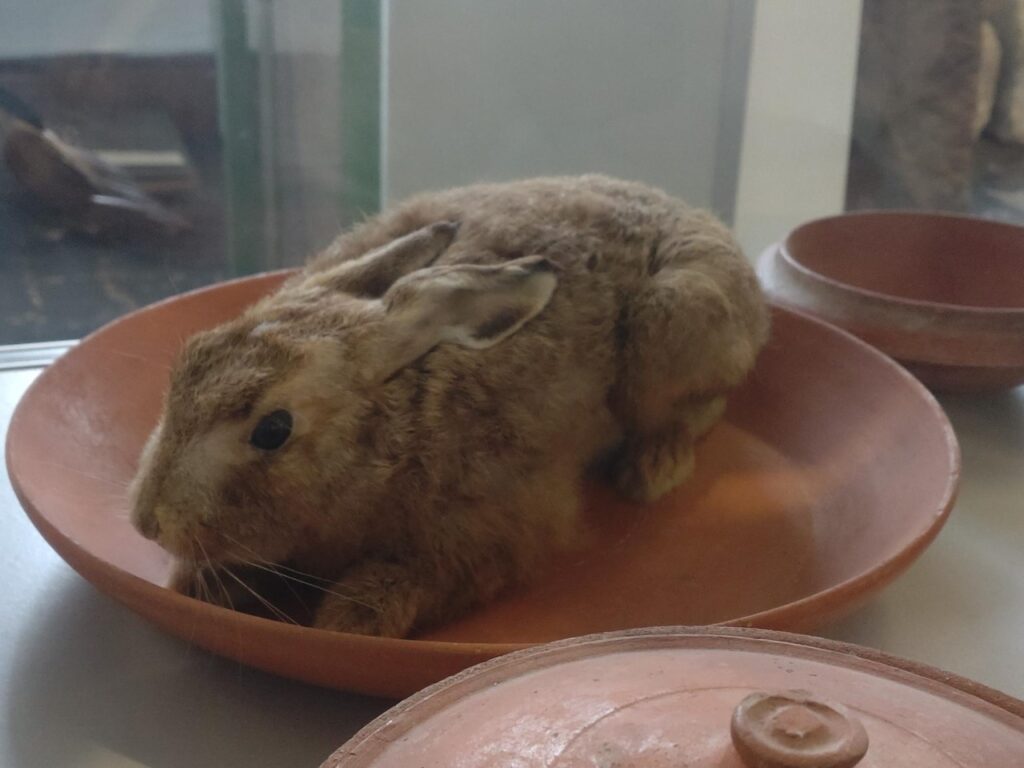Rabbits in Britain
Rabbits live in large groups in underground burrow systems known as ‘warrens’. Female rabbits, called ‘does’ produce one litter of between three and seven babies called ‘kittens’ every month during the breeding season. Rabbits can be popular among predators such as stoats, buzzards, polecats and red foxes, which is why having a warren to hide in for shelter is so important.
Introduced by Romans
Wild rabbits are widely thought to have been first tamed in 600 A.D. by French monks, when they were prized as food as a ‘meat substitute’ during Lent. However, re-examination of a bone found at a Roman palace more than half a century ago has shown that it belonged to a rabbit that may have been kept as a pet by the villa’s owners – making it Britain’s first bunny.
The 4cm fragment of tibia bone was unearthed at Fishbourne Roman palace in Chichester, West Sussex in 1964 but was stored in a box at the site until 2017, when Dr Fay Worley, a zooarchaeologist with Historic England, recognised it as belonging to a rabbit. Later Naomi Sykes, a professor of archaeology at the University of Exeter confirmed that it wasn’t from a modern rabbit by using radiocarbon dating.
Fishbourne Roman palace is the largest Roman residential building ever discovered in Britain and was built in 75AD, about three decades after the Roman Emperor Claudius’s invasion of England in 43AD.
The inhabitants of the palace were known to be wealthy and kept a varied menagerie, so the rabbit – which is native to Spain and Portugal – could have been an exotic pet.
Rabbits for the table

The influence of Roman food in Britain began even before the Roman occupation. Romans introduced many fruits and vegetables previously unknown to the Britons, some of which are still part of the modern nation diet. To name a few: asparagus, turnips, peas, garlic, cabbages, celery, onions, leeks, cucumbers, globe artichokes, figs, medlars, sweet chestnuts, cherries and plums were all introduced by the Romans.
The impact of Roman domination on British cuisine was also very profound. Roman cuisine was a lot more elaborate than that of the Britons, and it made extensive use of ‘exotic’ ingredients such as spices and herbs previously unknown in Britain. As a result, herbs and spices like mint, coriander, rosemary, radish, and garlic were introduced and increasingly cultivated. New farm animals such as white cattle, rabbits and possibly chickens were also introduced.
Reference; Ben-Fur: Romans brought rabbits to Britain, experts discover | Pets | The Guardian
Roman Food in Britain – Historic UK (historic-uk.com)The history of domestication: a rabbit’s tale | University of Oxford

